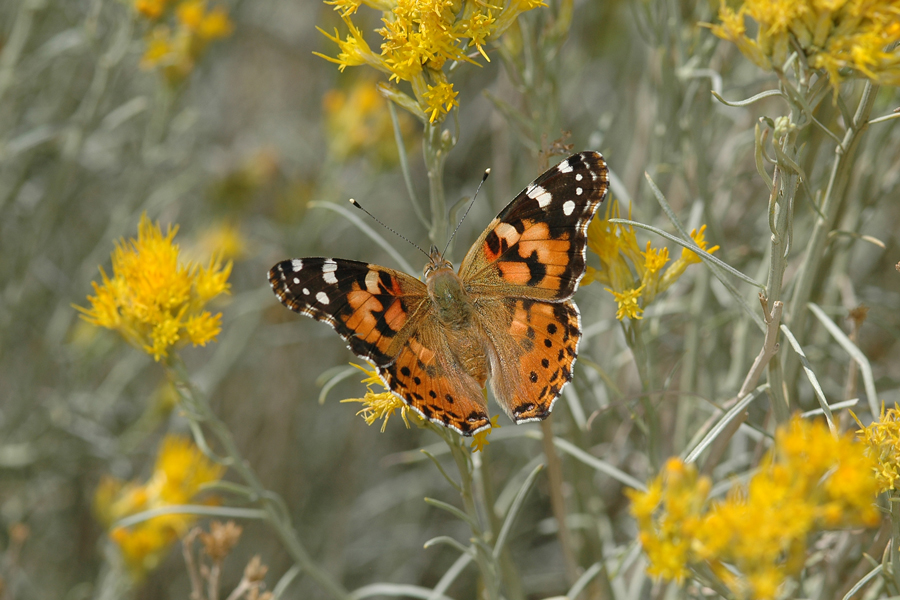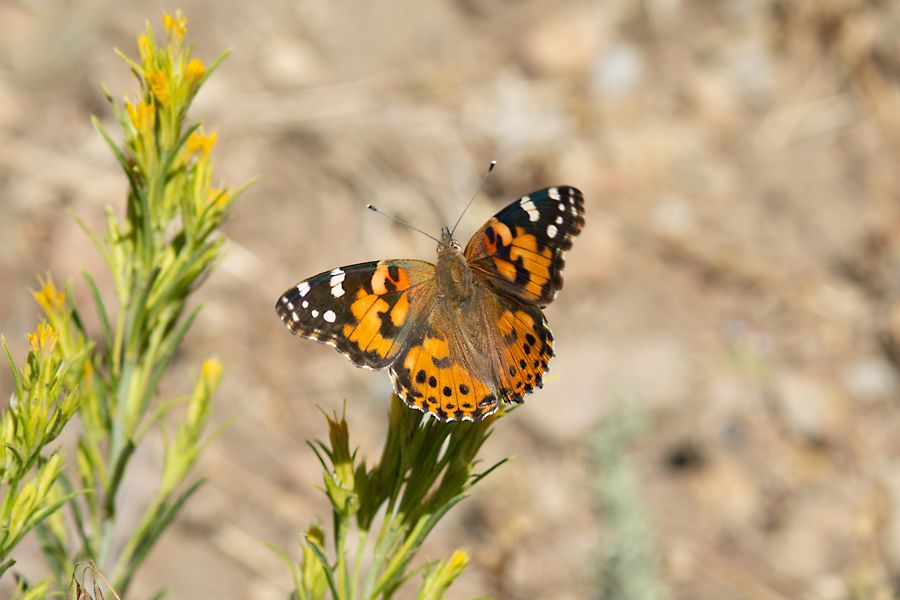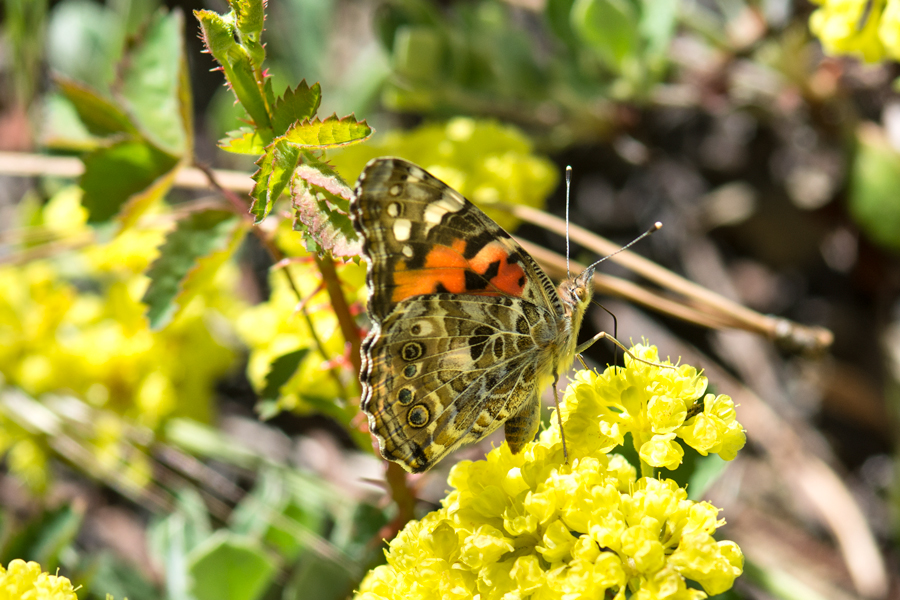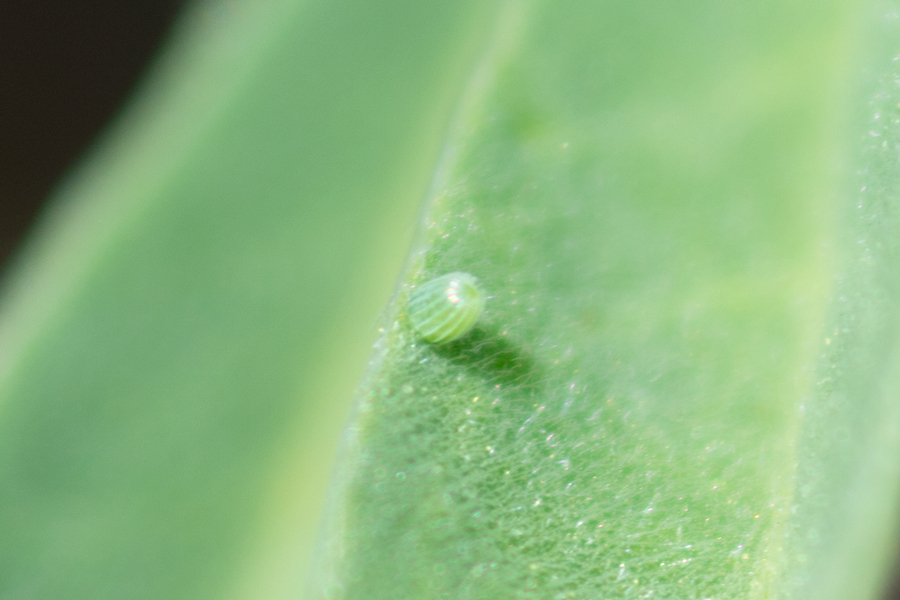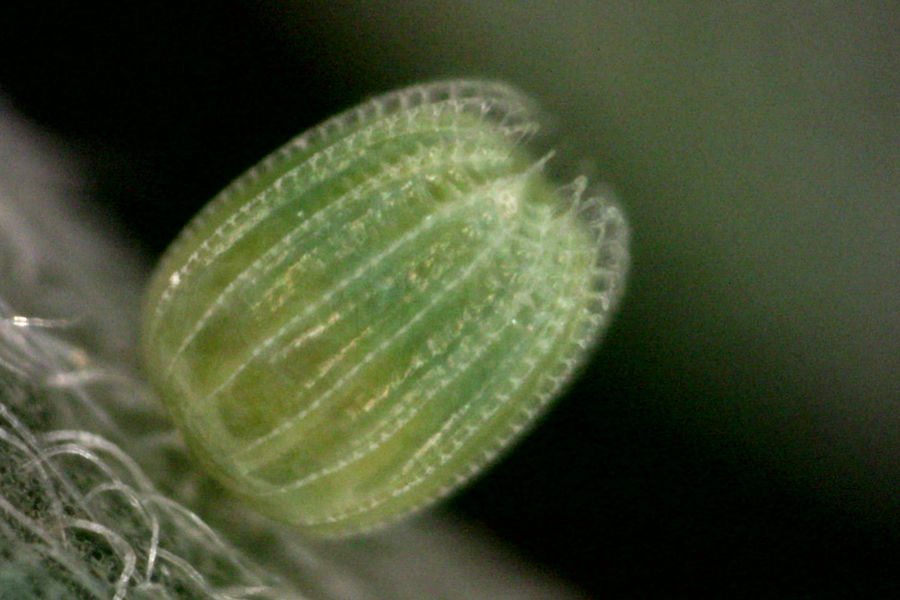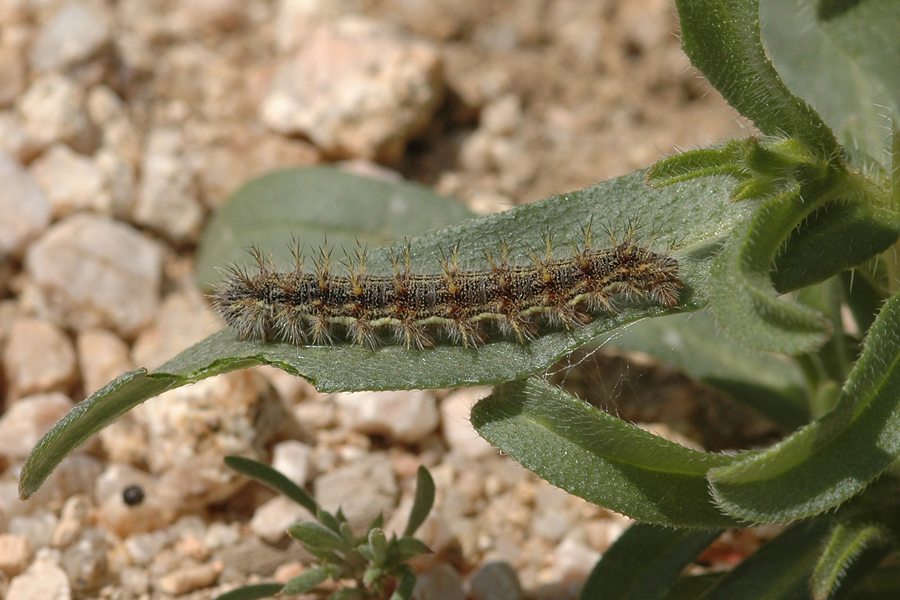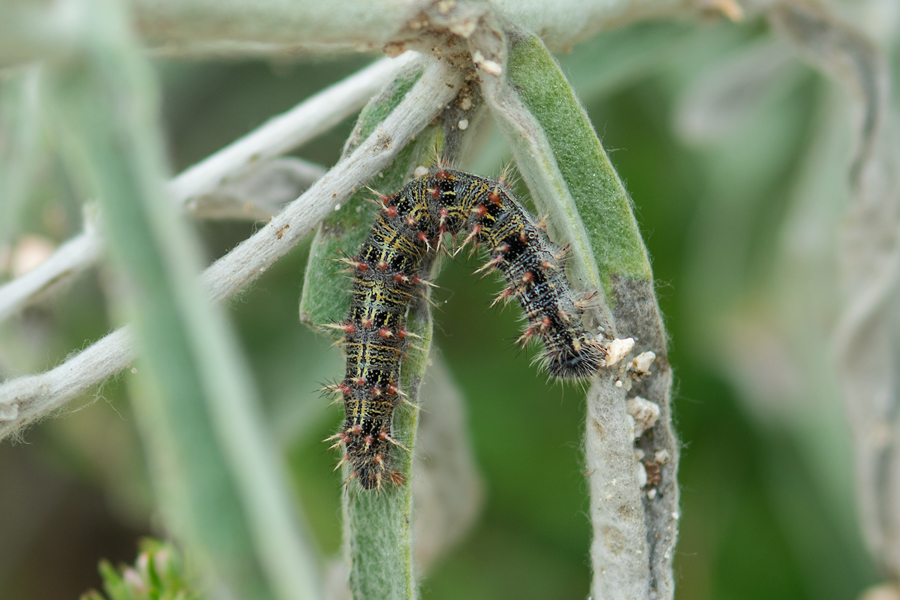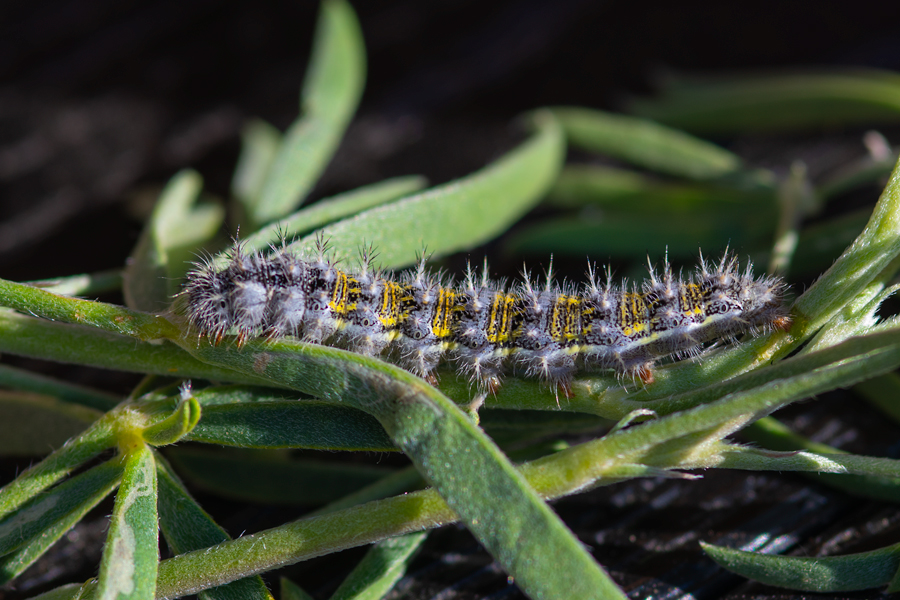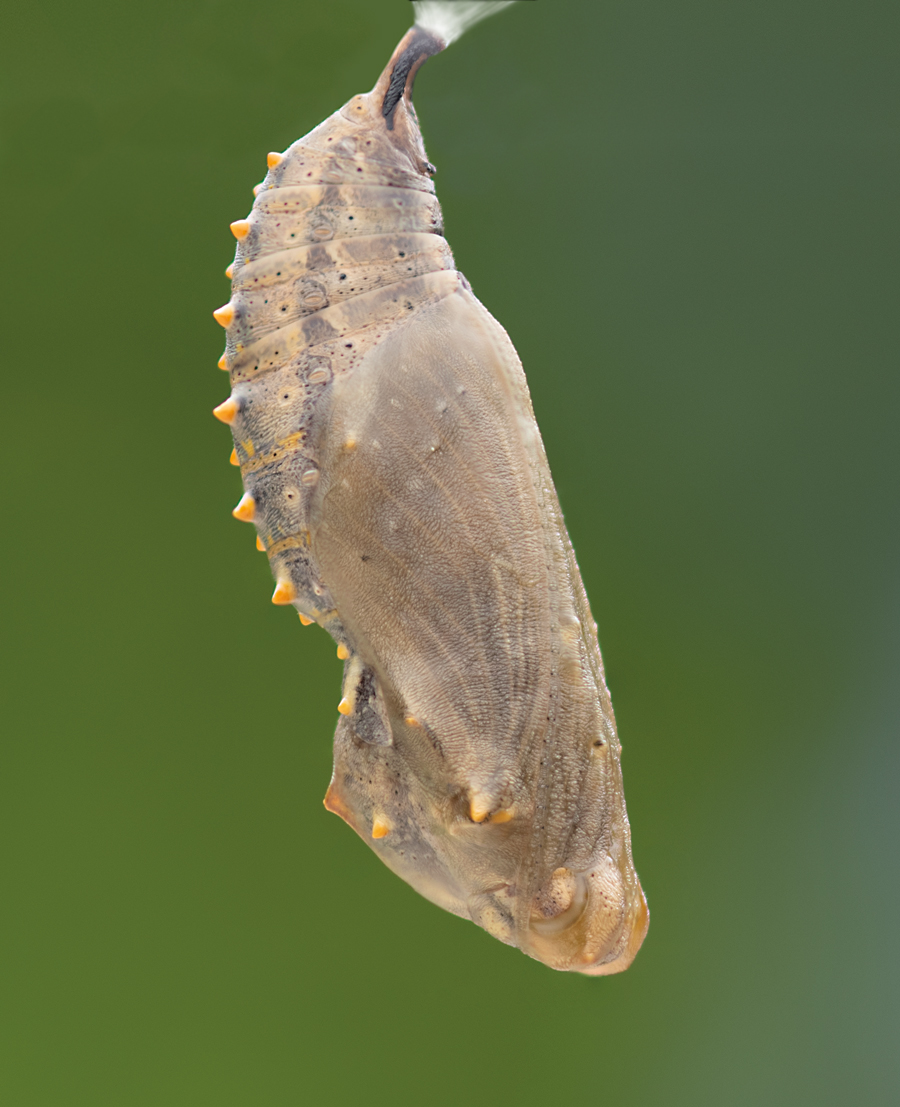Vanessa cardui
Painted Lady
Probably the best-known butterfly after the monarch, Vanessa cardui is found nearly worldwide and nearly all year long. Seemingly every spring they move northwards out of Mexico across California to the Pacific Northwest, sometimes in huge numbers. This is perhaps more a frantic dispersal than a migration, as there is no return. If the host plants are doing well in the southern deserts, the dispersal can be a truly astounding sight as a stream of butterflies continues ineluctably from morning to evening, through the cities, suburbs, and wild areas. Anyone driving is likely to become a butterfly collector, with a car's grill and windshield instead of a net. Those larval hosts include common plants such as fiddleneck, lupines, mallows, and nettles, which helps to explain why this is such a widespread, hardy butterfly with population explosions. Hollyhocks are a good garden plant kids can use to raise these (as well as V. annabella in the western U.S.).
Vanessa cardui was named by Linnaeus - the father of modern taxonomy - in 1758, with Sweden as type locality. The white bar in the forewing about a third of the way from the tip distinguishes it from V. annabella, which has an orange bar. V. virginiensis has two relatively large eyespots on the hind wing below, in contrast to cardui's small series of eyespots. Wing shapes also differ among the three ladies in our area: cardui has a forewing that is more rounded at the tip, while both annabella and virginiensis have a protruding tip, which in the former has relatively square "corners". Forewing shape is what I usually notice first when out in the field.
